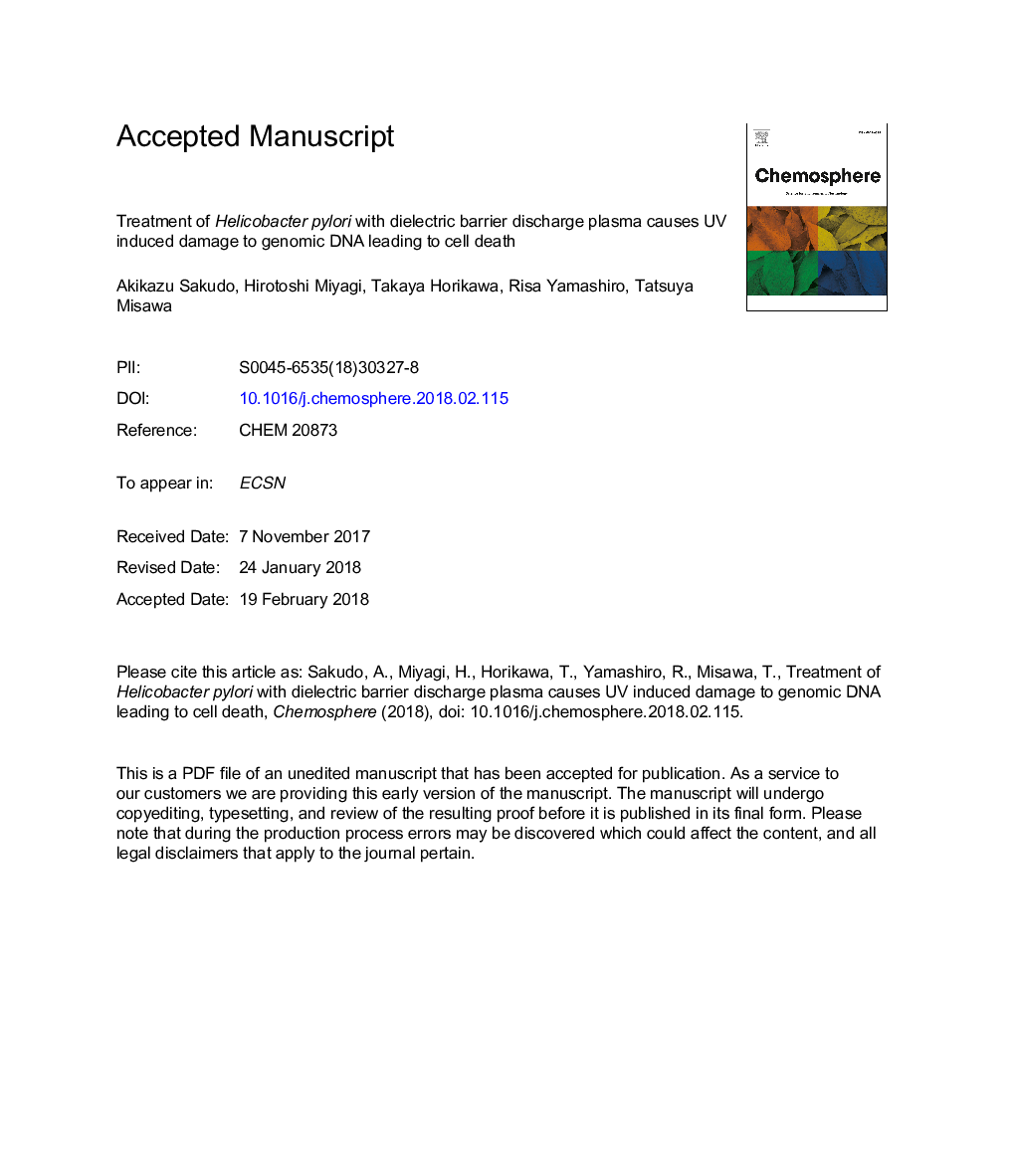| Article ID | Journal | Published Year | Pages | File Type |
|---|---|---|---|---|
| 8851791 | Chemosphere | 2018 | 37 Pages |
Abstract
Gastrointestinal endoscopy is an important tool for the indentification and treatment of disorders of the gastrointestinal tract. However, nosocomial infections of Helicobacter pylori have been linked to the use of contaminated endoscopes. Disinfectants such as glutaraldehyde, ortho-phthalaldehyde and peracetic acid are generally used in the reprocesssing of endoscopes, but these chemicals are hazardous to human health. Thus, safer reprocessing and disinfecion methods are needed. In this study, we applied a dielectric barrier discharge (DBD) plasma torch for inactivation of H. pylori to investigate a potential new methodology to disinfect endoscopes. Suspensions of H. pylori in 10% glycerol were subjected to the DBD plasma torch, which reduced the viable cell count to undetectable levels after 2â¯min of treatment. Furthermore, urease activity of H. pylori was eliminated after 2 min-plasma treatment, while plasma-treatment reduced the intact DNA of H. pylori in a time-dependent manner. Next, we examined several potential bactericidal factors produced by the DBD plasma torch. Two min-plasma treatment resulted in a small temperature rise (4â¯Â°C), ultraviolet radiation (UV) generation, and the production of hydrogen peroxide. H. pylori samples were then exposed to equivalent levels of each of these factors in turn. Our results showed that treatment with heat and hydrogen peroxide at the levels produced after 2-min of plasma treatment did not efficiently inactivate H. pylori, whereas exposure to UV had a significant bactericidal effect. Taken together, UV generated by the plasma torch may be crucial for efficient inactivation of H. pylori by damaging the bacterial DNA.
Related Topics
Life Sciences
Environmental Science
Environmental Chemistry
Authors
Akikazu Sakudo, Hirotoshi Miyagi, Takaya Horikawa, Risa Yamashiro, Tatsuya Misawa,
